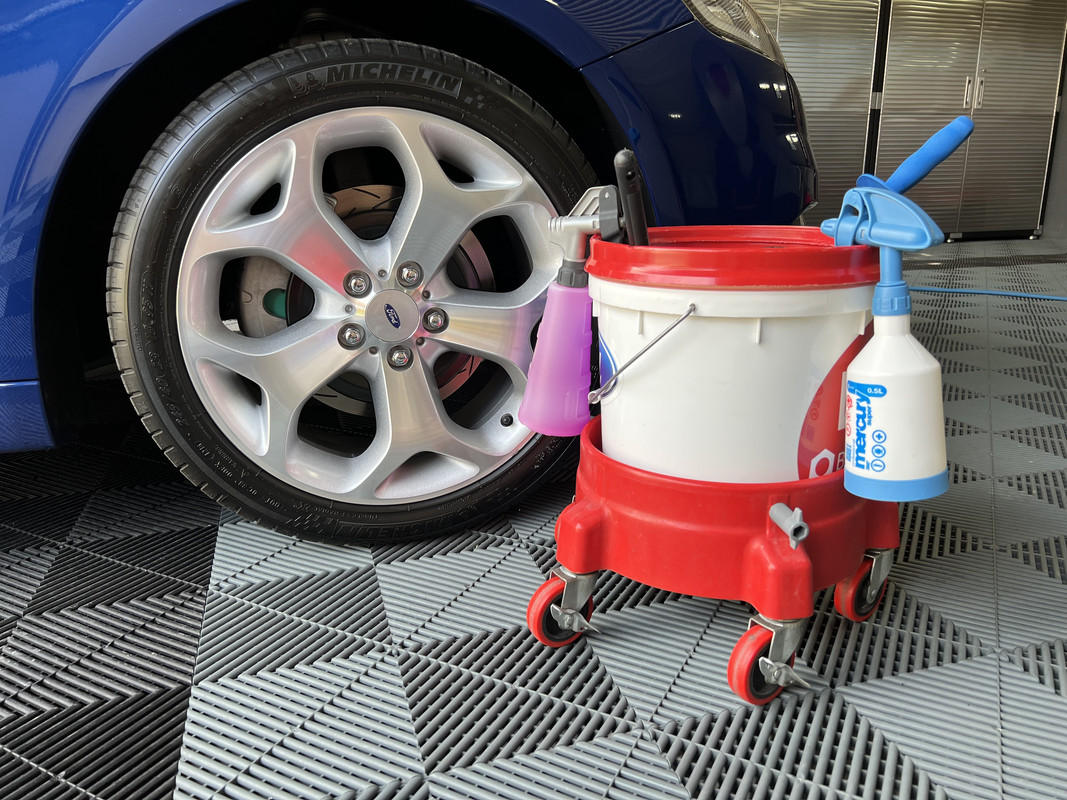XR6 Brake Upgrade
After having the wheels off the XR6 last month, it spurred me to act on something that has been on the maybe-one-day list.



Falcon’s were never renowned for braking performance. These were fleet, rental, police and taxi cars first, and performance orientated cars a somewhat distant second. I don’t say that to insult the Falcon or its fans, rather it's a realistic assessment of a car that had to sell in both volume and at low cost.
That low cost covers several different viewpoints. Firstly, the car needed to be attractive to fleet buyers, as in the ones who kept the factory volume up. To do that, Ford needed to offer an attractive per vehicle price, at the same time keeping running and repair costs low. In other words, provide a lower total ownership cost than the competitors. This is why Ford gained ground in fleet sales by offering 15,000 km intervals compared to Holden at 10,000 km service intervals. If a fleet kept the cars for 80,000 km before turning them over, each car would need just over 5 services in that time, a Holden would need 8 over the same period.
What does this have to do with brakes? Well, smaller brakes are cheaper to make, and cheaper to service/replace in the field. And this is why a large, powerful RWD sedan weighing beyond 1700 kg (3750 lbs) was fitted with braking hardware smaller than some small hatchbacks.
The standard Falcon braking hardware from the 2002 BA, right through until the very last FGX Falcon made in October 2016, was the same throughout. Even the BA and BA MK II XR6 Turbo and XR8 got this system –
Front – 298 mm x 28 mm ventilated rotors and twin piston sliding calipers.
Rear – 303 mm x 16 mm solid rotors and single piston sliding calipers.
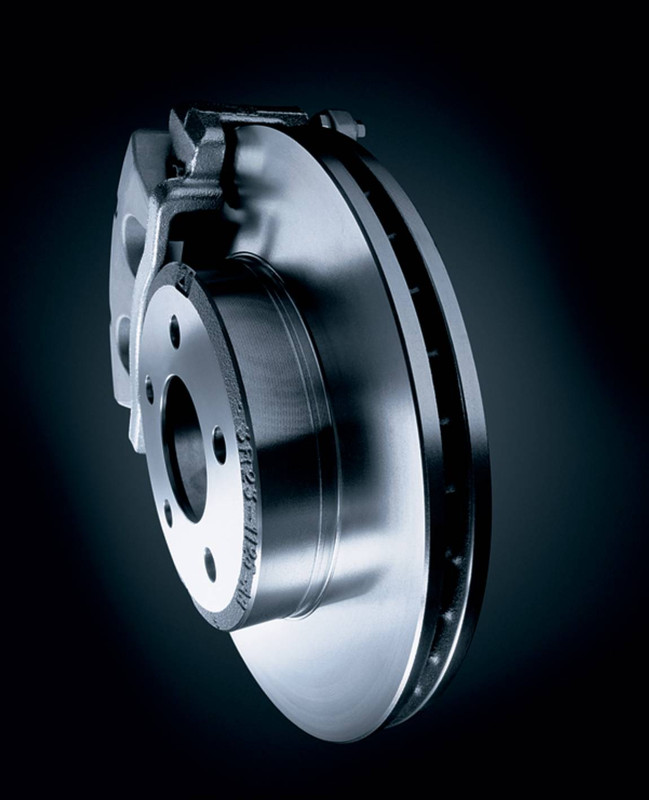
Ford did offer a much better Premium Brake system as a factory option on all BA and BA MK II XR sedans, the same fitted to the FPV GT, but uptake was low. The limited-edition BA MK II XR8 Devil R and XR8 Enforcer editions also featured those brakes as standard, as were a lot of early BA Falcon press cars. At the time of writing, even after raiding my image collection and scouring the internet, I could find little to no images of this system, be that the black Ford branded or the blue FPV branded examples.

Fun fact, if you paid the $2950 for Premium Brakes on a BA XR6/XR6T/XR8, your car went across the road to FPV for them to be fitted, and a matching alloy spare wheel was a mandatory option.
From BF onward, Ford deleted the Premium Brake option, and all XR6 Turbo and XR8 models came with an upgraded factory fit system (the NA XR6 missed out on this, nor was it an option) -
Front – 322 mm x 28 mm ventilated rotor and twin piston sliding calipers.
Rear – 328 mm x 26 mm ventilated rotor and single piston sliding calipers.
From what I can gather, at some point in the BF MK II run, and then onwards, those specs changed again with the rear reverting back to the standard 303 mm solid rotor and smaller caliper. Again, cost control in the lead up to the new model. For FG, this spec was also used on the G6E Turbo and FPV GS models as well.
Front – 322 mm x 28 mm ventilated rotor and twin piston sliding calipers.
Rear - 303 mm x 16 mm solid rotor and single piston sliding calipers.
I should point out that in normal driving conditions, the brakes on my XR6 are fine, but nothing more. The pedal feel is mushy, and the braking ability limited in performance orientated driving. My main gripe being a lack of stamina, you get one or two big hits and that’s it, the pedal gets longer, they start to shudder and become quite noisy. Which is where this upgrade comes in.
To be clear, I wanted Brembo’s, for the performance but also the looks. However, despite Brembo’s being a direct bolt on and fitting within an 18-inch diameter wheel, the front caliper won’t clear the back of the spokes on the XR Snowflakes. And I was not prepared to forego those beautiful wheels or pay for a new set of wheels and tires. A Brembo package with new wheels and tires would be near on half the value of the car itself. I like setting fire to cash, but not that much. :laughing:

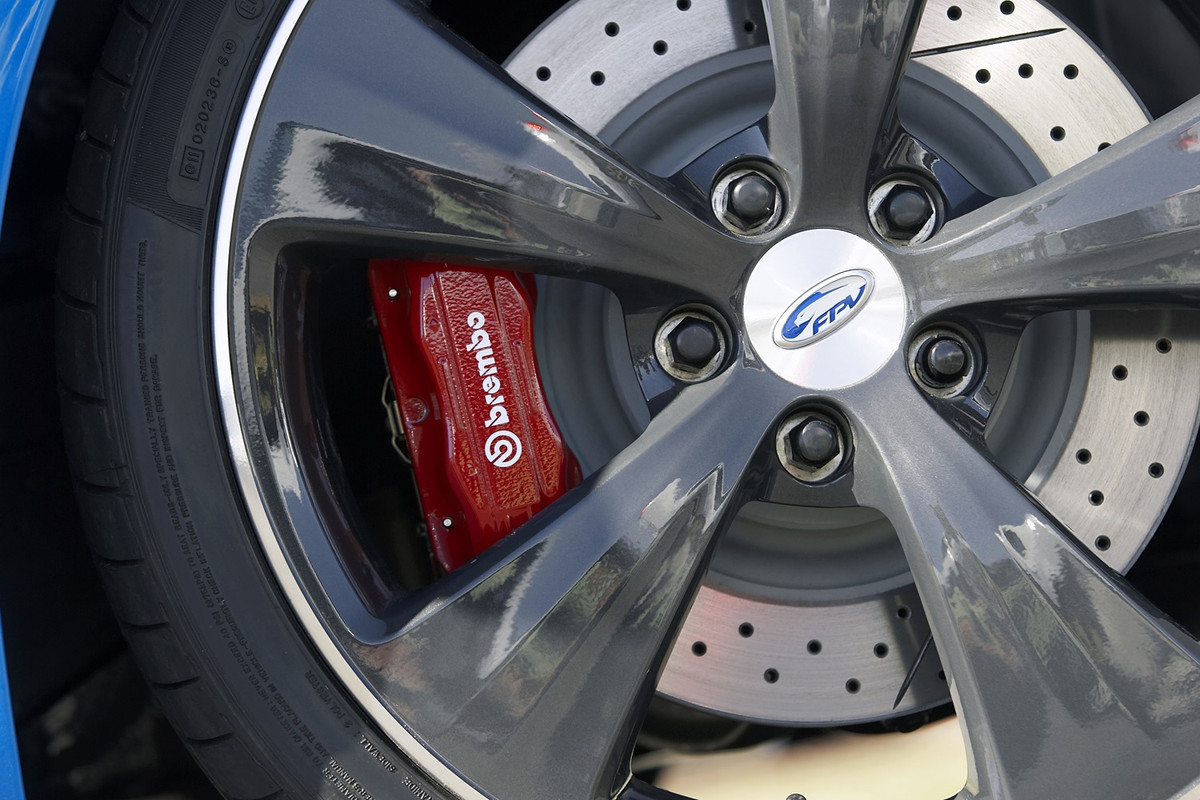
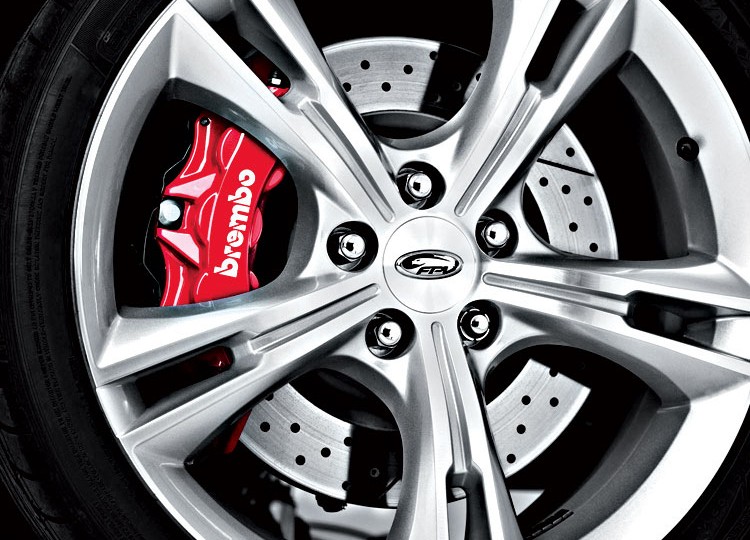

So, this is where I went looking for something that would scratch the braking itch, while being cost effective and without losing those wheels.
A few years ago, you could still buy a PBR upgrade kit, which in effect was a BA GT / BA Premium Brake system with larger/stiffer C5 calipers and larger grooved rotors. In this case, the calipers were painted red rather than blue or black. However, those kits are long gone.
https://www.fordforums.com.au/showthread.php?t=11357450
https://www.fordforums.com.au/showthread.php?t=11452132
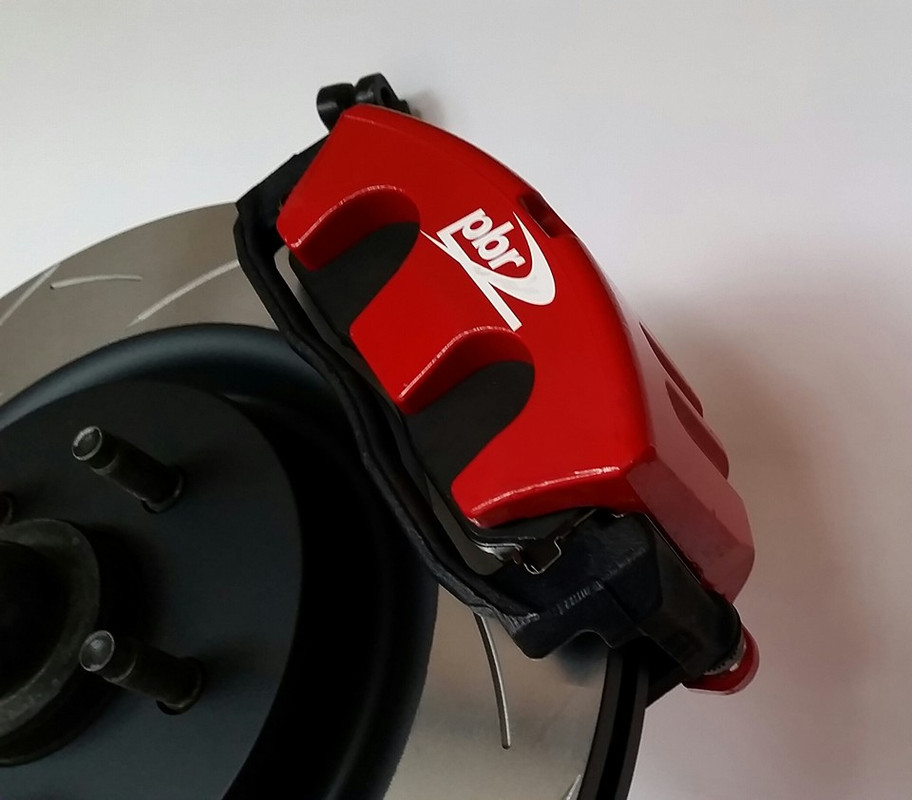
I also went looking for an after-market solution, which I found a couple of vendors selling aluminum mono-block 4, 6 or 8 piston calipers that would fit a variety of wheel styles rather than the set list of FPV-specific wheels. But………………I just didn’t love them, too “aftermarket” looking and questionable quality. Brakes aren’t something to take a gamble on in my opinion.
https://www.performancesuspension.com.au/ford-falcon-fg-2008-on-xyz-racing-6-pot-355mm-fixe~17089
https://www.vari.com.au/product/falcon-fg-fgx-gtp-kit/


So with that, I settled on a tried-and-true Falcon upgrade, fitting the BF – FG XR6 Turbo brake setup. In this case, the calipers all round remain the same, but the front rotors are increased from 298 mm to 322 mm.
The first requirement for this upgrade is a larger caliper support bracket. This is for the front only, the rear setup stays as is. These are available from the aftermarket or by sourcing a set at a wrecking yard. In my case, I ordered a new set online.
https://www.planetparts.com.au/ford-ba-fg-falcon-front-brake-upgrade-caliper-supp
https://www.ebay.com.au/itm/292209993994


The above bracket allows for the fitment of the larger front rotors. But what rotors? Because Ford used the same brake systems from 2002 to 2016 on Falcon and Territory, the availability and choice of spare parts is a huge bonus of these cars. Ford OEM rotors are still available, but I decided to go a few steps beyond that and looked at DBA’s range of aftermarket options. It’s at this point I reached out to Matt from Race Brakes Sydney for some advice.
https://www.racebrakessydney.com.au/
https://www.fordforums.com.au/forumdisplay.php?f=174
In my case, I skipped the OE-replacement 3000-series and went straight to the 4000 series in T3 spec. While DBA offer cross drilled and slotted 4000 XD and 4000 XS designs, Matt suggested sticking with the 4000 T3 slotted rotor. For the fronts, 322 mm x 28 mm ventilated rotors were chosen, the rears remain the same OE size solid 303 mm x 16 mm rotors.
https://dba.com.au/product/front-4000-series-t3-brake-rotor-dba42107s/
https://dba.com.au/product/rear-4000-series-t3-brake-rotor-dba4505s/


For pads, Matt recommended Project Mu NS-EP on the front, catering to my low dust/low noise requirements. On the rear, DBA Street Performance pads.
https://www.project-mu.co.jp/en/products/pad_ns-ep.html
https://dba.com.au/product/rear-street-performance-brake-pads-db1376sp/
Initially, I was going to leave it at that, however I decided to change the original 15-year-old rubber brake lines for Goodridge braided stainless steel items made by Matt for the Falcon. This modification should reduce that mushy brake pedal feel.
A few days later, some very HEAVY boxes arrived from Sydney...............

So, to recap –
- 24mm larger and upgraded front rotors
- Upgraded front pads
- Upgraded rear rotors
- Upgraded rear pads
- Braided stainless steel brake lines for each corner
- Penrite Super Dot 4 Brake Fluid (The fluid was last changed in 2019 :doh

With the above, I was hoping incremental improvements in key areas would add up to a more capable whole.
And this is where I changed my direction……………………
Up until then, I had intended to install these new parts myself. The key aspect being everything was a simple bolt on. But messing with the brake fluid, as would be required when changing the brake lines, was not something I was confident doing. So………………….I chickened out and had a local mechanic do the job for me. While I have been getting more and more confident doing mechanical work, messing with such an important safety system on the car didn’t appeal to me. I guess I could have done the rotors and pads myself, then passed the lines onto the mechanic, but I just decided to let them do it all. (Notice the Galaxy Blue AU I XR8 in the background, which was sounding very healthy as I picked up the car. If you think the FG's brakes look and sound underwhelming, those things were even worse with 287mm rotors and single piston calipers all round.

)
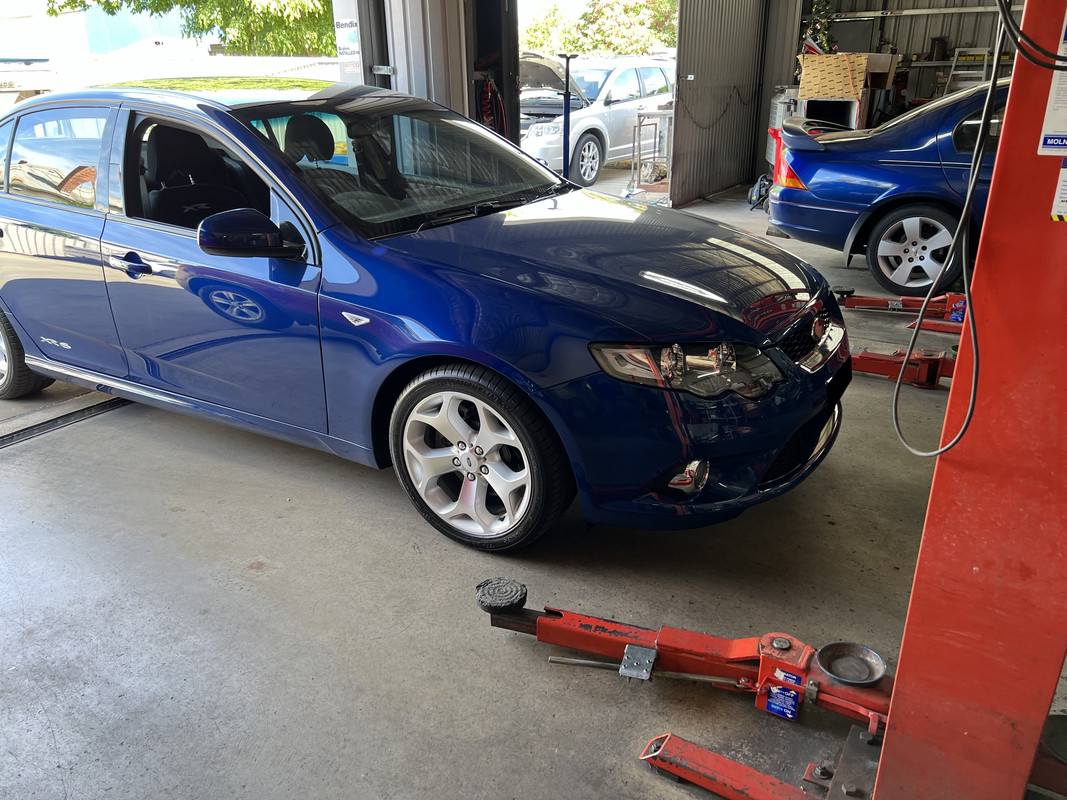



The main visual giveaway is the green Project Mu pads, otherwise this is a subtle looking upgrade, which suits me just fine. I'm sure if I had the dust shields removed, they would be more noticeable......................



While I haven't had a decent run with the new brakes, on the drive home from the mechanic, the first thing I noticed was the considerably smoother feel under foot and lower noise levels. I was expecting to have to bed them in, but they actually did that for me. I'm looking forward to giving them a decent hit in the future.
Cost BRAKE down -
I’m including this to give a better picture of what this modification costs.
XR6 Turbo Caliper Support Bracket - $69.00 (Normally $170)
4000-Series T3 Front Rotor - $265 each / $530 total
4000-Series T3 Rear Rotor - $200 each / $400 total
Project Mu NS-EP Front Pads - $198 set
DBA Street Performance Pads - $100 set
Goodridge Braided Brake Lines - $298 (set of 4)
Freight - $88.00 (Pickup is available for those in Sydney)
Penrite Super DOT 4 Brake Fluid 500ml – $19.00 each / $38.00 total
Fitment Labor - $385.00
Total Price - $2106
Yes, a lot of money. In terms of brake fluid, that is supposed to be replaced every two years anyway, and the rubber OE lines are now over 15 years old. One a maintenance item, the other preventative maintenance. The OE rotors and pads are virtually brand new, but most 15-year-old cars would have had at least one pad and rotor change in that time.
The side bonus of this upgrade is that I may have found a mechanic I can trust. For many, that is one of the biggest problems a car guy can face, finding someone who is knowledgeable and treats the car like their own. This is a smaller two-person operation, one that I had to wait several weeks to get an appointment. To me, that says a lot.

















































